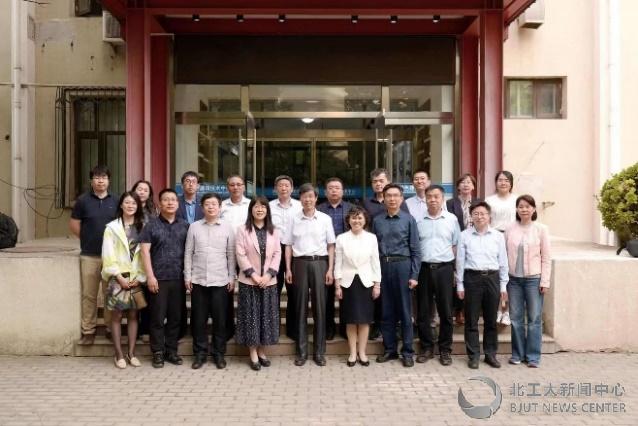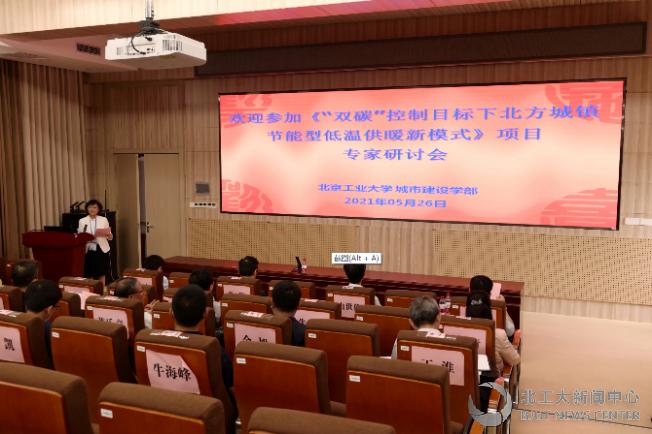On May 26, BJUT held the seminar on "the New Model of Energy-saving Low-temperature Heating in Northern Cities and Towns toward the Goals of Achieving Peak Carbon Dioxide Emissions and Carbon Neutrality". "The New Model of Energy-Saving Low-Temperature Heating in Northern Cities and Towns" is a consulting research project of the Chinese Academy of Engineering, hosted by Liu Jiaping, Director of Beijing Key Laboratory of Green Building and Energy Saving Technology at BJUT and member of the Chinese Academy of Engineering. More than 20 well-known domestic experts and over 100 faculties and students from China Academy of Building Research, China District Heating Association (CDHA), Energy Research Institute of National Development and Reform Commission of China, Tsinghua University, major design institutes and thermal power groups attended the seminar.

At the seminar, Prof. Chen Chao and Prof. Xie Jingchao from the Faculty of Architecture, Civil and Transportation Engineering of BJUT gave reports on the research progress of the new model of energy-saving low-temperature heating in northern cities and towns toward the goals of achieving peak carbon dioxide emissions and carbon neutrality. Prof. Yang Xudong of Tsinghua University, Prof. You Shijun of Tianjin University, Xu Wei, Dean of the Institute of Building Environment and Energy Efficiency of the Chinese Academy of Building Research, and Niu Xiaohua, Secretary-General of the China District Heating Association, were invited to give keynote speeches, entitled "Analysis and Thinking on Heating Room Temperature Monitoring Data of Some Users in Beijing, Intelligent Micro-Heating Network, Future Heating Mode Reform" and "Considerations on Current Status of Heating Industry and Low-Carbon Development", respectively.

The expert team discussed the research process and content of the project, and gave a high evaluation on the work of the project team. They agreed that: firstly, the project team proposed a new flexible and complementary heating and energy saving model in northern cities and towns (hereinafter referred to as "the new heating model"), by which the "one-stop-to-the-end" centralized heating model has been changed to a new "centralized + distributed" two-step heating model , in which the first "centralized" step sets the designed indoor temperature of the central heating system at the basic indoor temperature based on the indoor air temperature that humans can tolerate in winter and in the second "distributed" step, heat consumers can adjust the indoor temperature to meet individual thermal comfort through household auxiliary heating devices according to their own needs; secondly, the project is highly consistent with China’s goals of achieving peak carbon dioxide emissions and carbon neutrality. The proposed new heating model provides new ideas and approaches to solve the current problem of overheating in the room, which is common of central heating model in northern cities and towns, to reduce heating energy consumption, and to realize on-demand heating. Thirdly, the new model helps achieve adjustable heating by residential users, controllable heating by heating enterprises, and manageable heating by government departments. It is feasible in northern cities and towns in China, and it is recommended to include the follow-up studies as national key special R&D project of the 14th Five-Year Plan.




